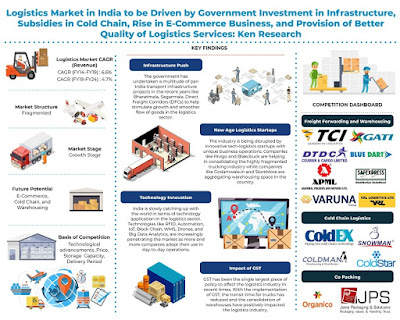How Is the Corporate Training Industry Positioned In the USA?
Traditionally the process of employee training was taken up by an internal team within the organization. Low college enrolment among youth, increasing use of technology leading to growing supply-demand skill gap and increasing attrition rate has led to a boost in training outsourcing. Also, the cost of inefficient training can be as high as USD 13.5 million per 10,000 employees per annum which further leads to training standardization.
The Corporate Training Industry in USA is positioned to be at a late growth stage with demand increasing with a CAGR ~% during the period 2014-2019. The training methodology has seen rapid digitization of content and migration towards online training. The influence of flurry of various large private and public corporate training companies as well as thousands of small start-ups training companies has been an important stimulant for the market. Rising demand for training on a spectrum of courses has put the market on an exemplary growth track The need of corporate training is underscored by Freshers, Engineers, Sales, and Marketing Professionals, Domain Experts, Software & IT Professionals for Digital Marketing, Data Science and Analytics, Machine Learning, Deep Learning, Cloud, AI, and Blockchain & Big Data Programs. The companies are cutting budgets on soft skills and vocational training due to the increasing need for technical training.
Microlearning programs that are bite-sized courses that can be consumed in a short period of time are increasingly used to save time and to increase employees' concentration during training. Experimental training including simulations, sensitivity training, case studies, and gaming, increases focus and gives better results which encourage other enterprises to undergo training. There is a shift from generic to strategic training with the increasing need for training customization.
How Is the Demand Segmented?
By Organizational Size: Average Training The budget of large companies is much higher than midsize and small companies. But the training budget per employee is almost the same for large and small enterprises. Since more than 50% of the companies are small in the USA the demand is collectively dominated by small companies followed by large and mid-size companies.
By Designation: Demand is dominated by non-managerial training followed by managerial and integrated. Lack of required skills among fresh graduates and increasing use of technology has driven the demand for non-managerial training. Increasing demand for integrated training due to growing importance to regulatory norms, compliance, awareness, and company culture. The growing use of technology has led to a need for skill enhancement among management.
By Delivery Mode: Classroom training is still the most preferred mode while e-learning is gradually taking on because of low priced modules and flexibility in learning. In order to increase learning efficiency, blended training is increasingly used as it enhances engagement and increases accessibility. Virtual training becomes convenient for companies with hub and spoke office structure.
By Deployment: On-site training is increasingly preferred over off-site training with growing managed training contracts. Most corporate training companies in the US do not have classrooms to save lease costs. For instance, Simplilearn closed more than 100 classrooms to cut cost.
By Course Type: Increasing use of technology, lack of corporate knowledge among fresher and frequent change in business methodology driving the growth in technical training. Leadership training which is usually required post promotions and change in business strategy is gaining traction due to increasing business decentralization. Managerial training is gaining momentum to train the efficient management of the growing millennial workforce. Sales training is usually performed in-house due to the subjective nature of the sales pitch.
Key Segments Covered: -
By End User Industry
BFSI
IT and Telecom
Healthcare
Automotive
Manufacturing
By Training Services
Technical
Leadership
Managerial
Sales
Customer Support
By Delivery Mode
Classroom Training
Blended Training
Virtual Training
Online Training (No Instructor)
By Organizational Size
Large Companies (+1000 Employees)
Medium Companies (500-1000 Employees)
Small Companies (0-500 Employees)
By Designation
Managerial
Non-Managerial
Integrated
By Deployment
On-Site
Off-Site
By Training Type
Customized
Open
Companies Covered:
GP Strategies
Franklin Covey
NIIT
Learning Tree International
Global Knowledge
Pluralsight
Centre for Creative Leadership
Skillsoft
Udemy
Udacity
Coursera
Simplilearn
Key Target Audience
Corporate Training Companies
Education Platforms
Corporate Training Aggregators
Corporate Organizations
Management Consultants
Corporate Trainers
MHRD
Education Associations
Time Period Captured in the Report: -
Historical Period: 2014–2019
Forecast Period: 2020-2025
Key Topics Covered in the Report: -
US Employee Training Industry
US Ed-Tech Market Growth
US Corporate E-Learning Industry
US Corporate Training End- User Industry
Training industry in the U.S
Corporate Training Companies in U.S
Education Platforms in the USA
Managed Employee Training Services US
US Corporate Training in IT Industry
USA Employee Education Market
Franklin Covey Enterprise Training Market Size
Udemy Enterprise Training Market Analysis
Corporate Training in America
US Corporate Training Market Major Players
US Corporate Training Market Outlook
USA Corporate Training Market
For More Information on the Research Report, refer to below links: -
Related Reports by Ken Research: -
Contact Us: -
Ken Research
Ankur Gupta, Head Marketing & Communications
Ankur@kenresearch.com
+91-9015378249
Ken Research
Ankur Gupta, Head Marketing & Communications
Ankur@kenresearch.com
+91-9015378249




